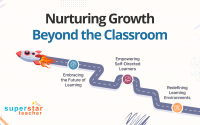5 Ways to Condense Notes for Secondary Science Revision

When it comes to science revision, there is no one-size-fits-all approach. Some students prefer to read through and highlight their textbooks, while others prefer to do secondary school test papers. However, one of the most effective ways to revise for science exams is to take detailed notes. The process of writing down key information helps to consolidate learning and embed scientific concepts in long-term memory. What’s more, having a set of well-organised notes to refer back to can be a lifesaver when it comes to last-minute exam preparation.
Whether your child is revising for exams or just trying to keep on top of the material covered in class, taking good notes can make all the difference. Starting with having a dedicated notebook for science, here’s how your child can take effective notes:
1. Draw it out
When your child is first learning a new concept, drawing can be a very effective tool for understanding and remembering information. This is especially true when it comes to subjects such as biology. When your child takes the time to draw out the digestive system or map out the parts of an animal cell, they can better visualise complicated parts and processes. Additionally, the act of drawing itself can help to engage different parts of the brain and solidify information in long-term memory.
2. Mind mapping
After reading through a chapter in their secondary science syllabus, your child can also do up a mind map and organise the information in a way that makes sense to them. Mind mapping can be a fun and engaging way of learning, especially for difficult secondary science topics where there can be a lot of information to remember. A mind map can help your child to see the big picture and identify the most important points.
To create a mind map, start by writing the topic in the centre of a piece of paper. Then, draw branches out from the central topic, and write key concepts and ideas on the branches. Your child can also add drawings and highlight keywords in their mind map to get a grasp of the material as a whole.
3. Create a summary
Additionally, it can be helpful to summarise the overall chapter in their own words. This can help your child to identify the main points and see how they fit together. It can also be an additional exercise to check that they have understood the material. When creating a summary, it is essential to be concise and focus on the most important information. They may also want to include questions or areas that they are unsure of and want to explore in more depth.
By taking the time to create a summary, it can also provide your child with a useful way of revising later on – by reading over their summary, they can quickly remind themselves of the main points without having to go through their textbook again.
4. Use sticky notes
On top of their study notes, your child can also use sticky notes to quickly and easily identify key points that they want to remember. They can also place the sticky notes in their notebook to flag up specific sections that they need to revise in more detail. Try using different colours to code different topics to make revision more efficient and enjoyable.
If your child has learnt something extra in a chapter, they can simply add the new information on a sticky note and attach it to the relevant section. This is also a good way to make sure they don’t forget anything important.
5. Refer to Superstar Teacher
To complement their note-taking, your child can also refer to the closed captions in our online lessons – a key element of our tuition plan at Superstar Teacher in Singapore. Your child can pause the lesson at any point of time to jot down key points of the topic before continuing with the lesson. Sign up for a 14-day free trial to improve your child’s learning and retention of their secondary science syllabus today.



